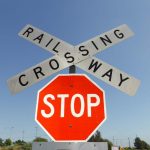
In various parts of Australia you will come across many trains. Some crossings will be well sign-posted and will have barrier arms, bells and flashing lights, such as in metro areas; others may have limited signage such as the cane…
School signs are often conspicuous bright colours. Many of them will be accompanied by a speed restriction applicable usually between 8-9:30am and 2:30-4pm while children tend to be walking or biking to and from school. Different States may use slightly…
Route signs are shown on maps and markers and are useful because they allow you to stay on a particular road for navigation purposes even when that road might have several different names. All routes are numbered, although most have…
These signs are temporary signs that describe a change in the road layout, road condition or a type of hazard that might not usually be there. They are generally yellow with a black border and black writing, but can be…
Regulatory road signs tell you something you can’t do (e.g. no left turn), a specific restriction (e.g. a speed limit), something you can do (e.g. a u-turn is permitted but not compulsory), or something you must do (e.g. give way).…
Hazard road signs can indicate the direction of the road or the end of a road (e.g. at a T-intersection), usually with black chevrons on a white or yellow background. They may also give an indicated safe speed for a…
Guide road signs tend to be blue or brown with white or yellow icons and white lettering, although the red signs advising of a steep descents grades are guides, too. They can include tourist information, public areas such as sports…